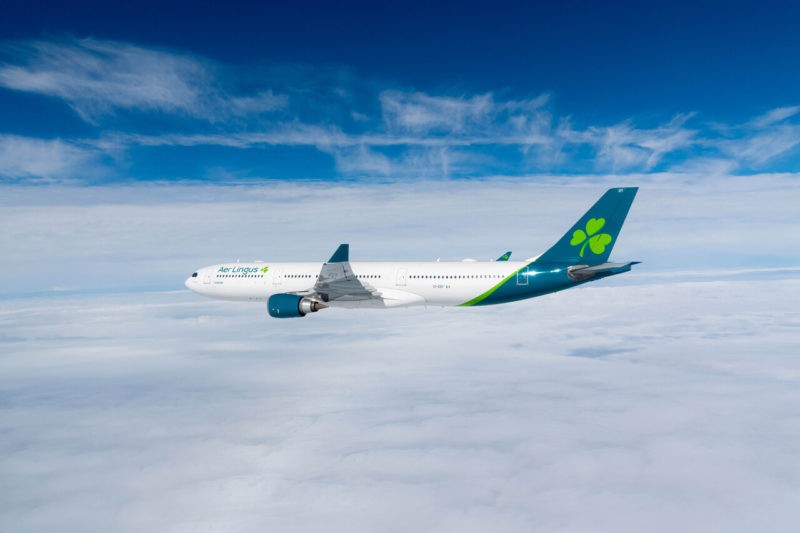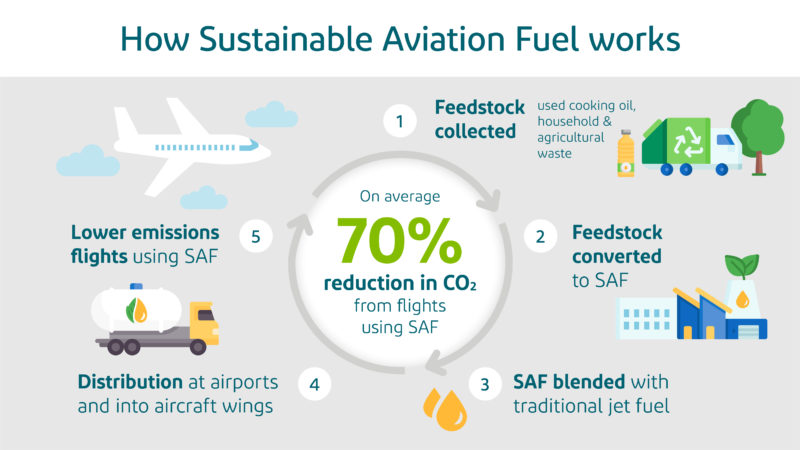Aer Lingus announced that it has signed a sustainable aviation fuel supply agreement with Gevo, Inc – a US-based renewable fuels producer.

The agreement will see the purchase of 19,000 tonnes of sustainable aviation fuel per year for five years.
As part of IAG, Aer Lingus has pledged to achieve net zero carbon emissions by 2050 and has committed to powering 10% of its flights using sustainable aviation fuel (SAF) by 2030. Aer Lingus plans to commence fuelling its aircraft with SAF from Gevo from 2026.

Sustainable fuel at work – Image, Aer Lingus.
The supply agreement will see Aer Lingus purchase enough SAF to reduce lifecycle CO2 emissions by at least 180,000 tonnes, the equivalent of powering 1,000 net zero CO2 emissions flights between Dublin and Los Angeles on an A330 aircraft.
In Quotes
Speaking about the fuel supply deal, Aer Lingus Chief Executive Officer, Lynne Embleton said:
“This agreement with Gevo marks an exciting and critical step on our journey to net zero carbon emissions and underlines our commitment to powering 10% of flights using sustainable aviation fuel by 2030.
The sustainable aviation fuel produced by Gevo will be used to power our flights from Los Angeles and San Francisco and, from 2026, 50% of fuel purchased by Aer Lingus from California will be sustainable aviation fuel.”
Dr. Patrick R. Gruber, Gevo’s Chief Executive Office said
“Gevo’s sustainable aviation fuel delivers renewable energy to a transportation sector that is actively seeking to reduce its carbon intensity,”
“Because our fuel is fungible and drop-in ready, it’s expected to have an immediate impact to help our partner airlines achieve their sustainability targets ahead of schedule.”
Reducing the footprint in other ways
Aer Lingus has been busy trying to reduce its footprint in other ways. These include:
Reducing waste by dropping the plastic cutlery packs with packs made from birch wood, a sustainable material, resulting in a reduction of almost 23 tonnes of single-use plastics per year, removing newspapers and switching to electronic distribution, improving operational efficiencies when taking off/landing and the use of electrically powered vehicles by the ground operations team at Dublin Airport.
It’s still a drop in a kerosene-filled option.
It’s good to see other supplies of Sustainable Air Fuel coming on stream at last – with the market needing both more supply and competition to drive the cost of the product down, as well as make it more mainstream.
With its drop-in ability to replace kerosene, airlines are looking to SAF to make up some of their Net Zero by 2050 plans – not just IAG, but airlines worldwide.
In the application Aer Lingus are looking at, they’re choosing to blend the SAF, rather than use it neat – which seems how a lot of airlines are planning to use it. However, there are certification programmes afoot to allow for 100% SAF-based flights and operations in the future.
And that circles us back to the issue of supply – or the lack of. SAF continues to be a developing market with certain companies going all-in on it. However, you all know the numbers by now – that SAF production will be a mere drop in the ocean for years to come (after all – the SAF has to come from somewhere and has to be grown or produced from a constant stream of other products).
There’s still a long way to go before SAF becomes the default fuel choice, even longer until 100% SAF becomes the commonplace option.
And there are a lot of politics in the way too before SAF really can take off too.
Welcome to Economy Class and Beyond – Your no-nonsense guide to network news, honest reviews, featuring in-depth coverage, unique research, as well as the humour and madness I only know how to deliver.
Follow me on Twitter at @EconomyBeyond for the latest updates! You can follow me on Instagram too!
Also remember that we are part of the BoardingArea community, bringing you the latest frequent flyer news from around the world.